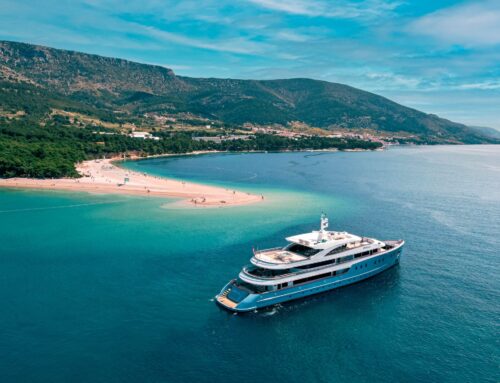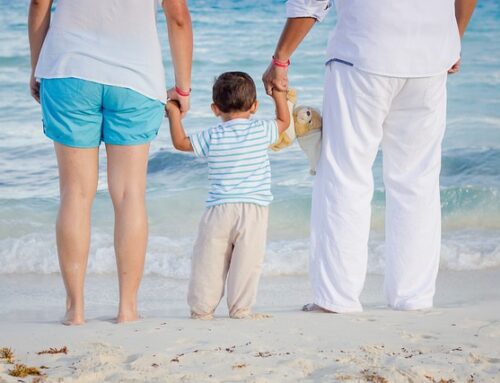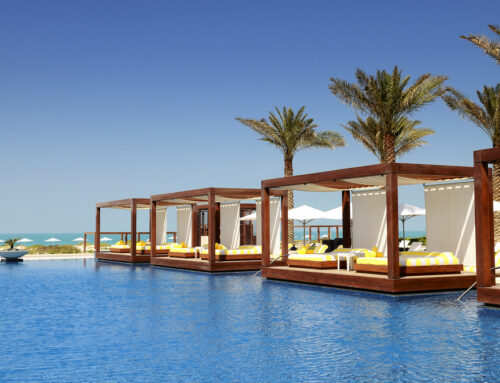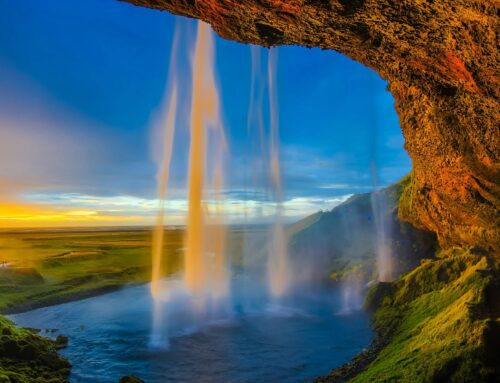5 Top Cultural Experiences in Kerala India
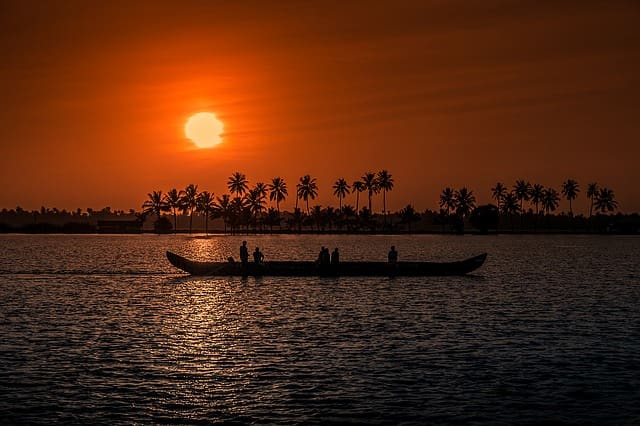
Let’s Go Cultural in Kerala, India with 5 Top Cultural Experiences for Your Kerala Holiday

Kerala is the southernmost state of India. The culture of Kerala has developed over a thousand years and has been influenced by various regions of India and abroad. The culture of Kerala is combined by both Indian and Dravidian cultures. The name Kerala is assumed to be originated from the words “Kera” and “Alam”. Kera simplifies “Coconut” and Alam means “Land”. Thus it is denoted by the phrase “The Land of Coconut Trees”. With so much cultural diversity, it should be no surprise that Kerala is filled with interesting cultural experiences. Here’s our introduction to 5 cultural experiences in Kerala that should not be missed.
Kerala has a rich cultural heritage, which is influenced by diverse cultures made up of a blending of various religions, communities, language variation and regional cultures such as art forms, literature, music, festivals, cuisine, archaeological monuments. It is believed that several people from different castes and races have significantly contributed to the Kerala culture. It fundamentally includes three main religions of Hinduism, Christianity, and Islam. The shrine of Kerala exhibits extremely delicate and beautiful sculptures, carving and architectural features which serve as evidence to the skill of those craftsmen who created them. Some of the well-known beautifully constructed temples in Kerala are Sri Padanamabhaswamy Temple situated in Thiruvananthapuram and the Guruvayoor Temple Located in Thrissur.
The official language spoken in Kerala is Malayalam and the natives are called Malayalees. Legend has it that Lord Parasurama the creator of Kerala, transformed a portion of the sea into land by throwing his axe. During ancient times, Kerala was said to be the part of the present Tamil Nadu state which covered the then Chola, Chera and Pandya dynasty. The new cultural heritage was implemented in Kerala after the arrival of Vasco da Gama and also by its unique geographic peculiarities, as it lies in the middle of the Arabian Sea and the Western Ghats.
1. Watching Kathakali in Kerala
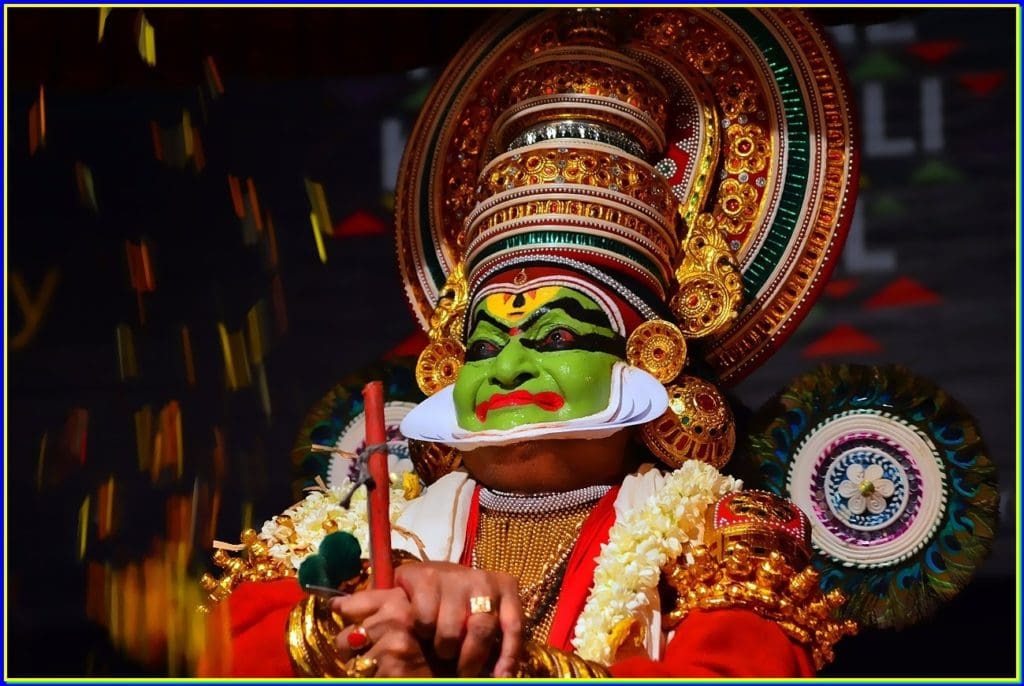
Kathakali is said to be one of the oldest classical Indian dance forms in India. Dances are adjoined or connected with storytelling, making the dance form more interesting and distinguishing from the others. The story in kathakali is also communicated to the spectators through impressive facial expressions and hand gestures, accompanied by music and a vocal performance with distinctive makeup, colorful costumes; which combined all together makes it the most stylish form of traditional dance.
There was a dance-drama that presented the story of Krishna in a series of 8 plays that existed from 1585 to 1658 AD and it was termed as Krishnanattam. During this era, certain political turmoil had brought in harsh thoughts and criticisms which led to the introduction of another art form known as Ramanattam, which was later on known as Aattakatha, which finally got its name and identity changed to Kathakali.
Before the commencement of the performance, lamps are lit with a cotton wick dipped in a solution of pure coconut oil, which emits a unique ambiance artistically. Ethnic costumes along with classical instruments playing in the background while being accompanied by a troop of Carnatic singers brings this art form to a prestigious status. The costumes adopted for this dance form vary for different characters, for instance, Sathwika for the hero, Minukku for the females, Thatti and Kathi for the villains.
2. Enjoy a Kalaripayattu Experience
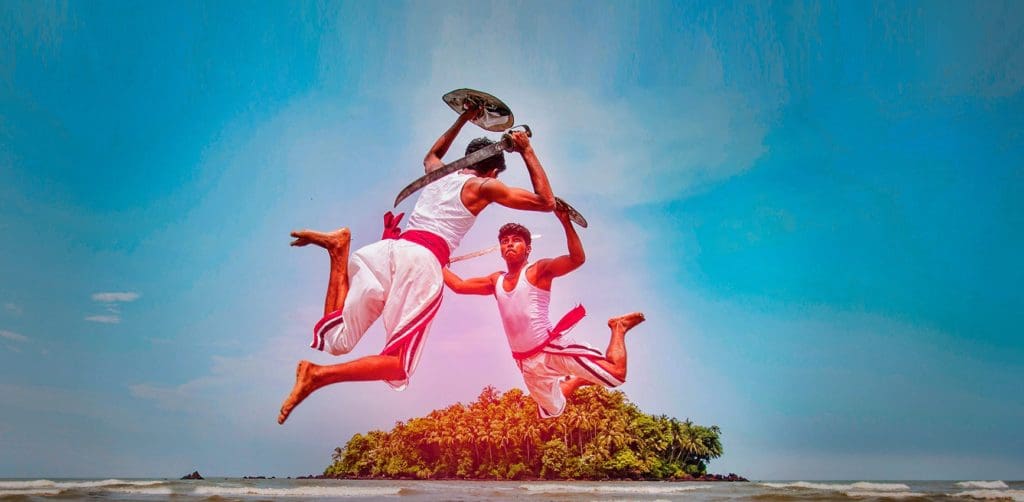
Kalaripayattu is the oldest scientific Indian Martial arts, self-defense and fighting system that emerged and was practiced by the brave and experienced soldiers and fighters in Kerala. It has been acknowledged and widely accepted across the world. This are sometimes termed as “Kalari”. The entire body of the fighter is massaged with oil before they start the training. It also incorporates certain difficult acrobatic movements that require a lot of skill, strength, and courage such as chattom (jumping), ottam (running), marichil (somersault). They also teach lessons in using weapons like swords, bows, and arrows, daggers, etc.
A person undergoing training in Kalaripayattu must ensure that they have a balanced mind and body. Kalari’s are considered to be important centers of religious worship. Stick is the first weapon given to students who are training under Kalaripayattu. Gradually as they learn to control it they will be introduced with curved sticks, spears, etc. Kalaripayattu is practiced in an area named “Kalari” that is surrounded by a fence that prevents movement or access outside. To perform this Martial art requires a great amount of strength and consistent dedication since they are taught with various types of challenging forms. Kalari has a traditional orthopedic system which helps to diagnose people with displaced bones, and those suffering from rheumatism. This traditional method of healing includes the usage of herbs, pure oil, and pastes. In a Kalari Massage, the therapist uses his hands and feet, applying pressure on the marma points which is a juncture on the body where two or more types of delicate tissues meet such as muscles, veins, ligaments, etc. It is also believed that the eastern martial art form of Kung Fu have originally come from Kalaripayattu.
3. Have Traditional Kerala Sadya Meals in a banana leaf
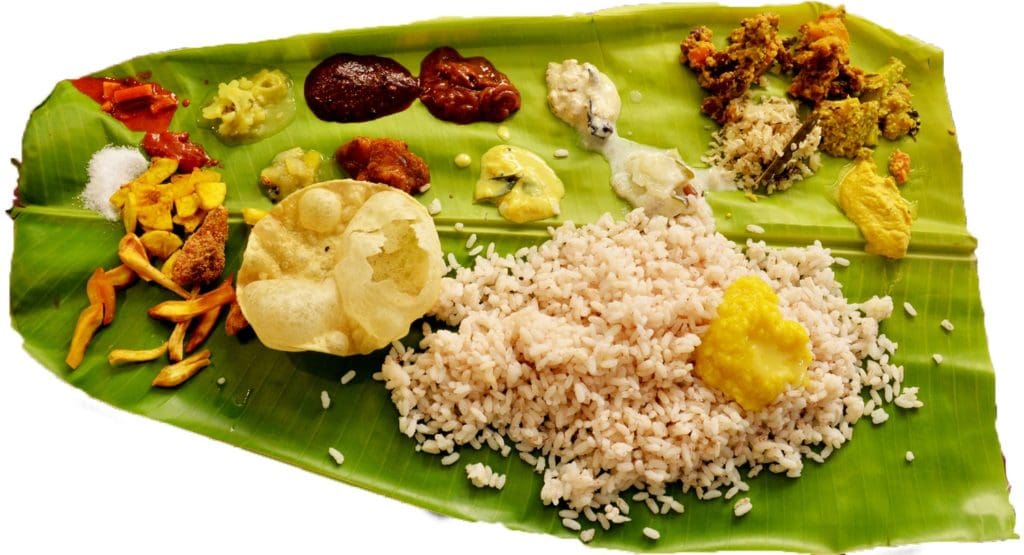
Sadya is a celebratory vegetarian cuisine, typically a large one can spread up to 28 dishes at a time. This traditional mouth-watering vegetarian feast of Kerala is one of the most favorite delicacies provided. Sadya is served on a banana leaf. It consists of steamed red rice, side dishes, pickles, savories and desserts offered at different times of the meal. First rice is served and after that, a liquid curry made from small gram and ghee named “Parippu” is served followed by “sambar”, “avail” which is a combination of fresh vegetables that adds additional flavor to the entire Sadya. Thoran is another predominant side dish, which usually contains chopped string beans, cabbage, radish or grams mixed with shredded coconut adding red chilies and turmeric powder as subsidiary ingredients.
Major savories of sadya include Upperi (deep-fried banana chips), Pappadams, ginger pickle, and Kichadi, mango and lime pickle. Payasam, Kerala’s beloved desserts are served at the end of the meal. Different variety of Payasams is available like Pal Payasam, Palada Pradhaman, and Kadalaparippu Pradhaman. A payasam is fundamentally a pudding of sweet brown molasses or milk with garnished cashew nuts and raisins. At the end of this delicious meal, one is again served with rice and rasam. Rasam is a mixture of sweet chilly and pepper powders by adding salt and chopped green chilies. The meal comes to an end by folding the banana leaf in half. Sadyas in Kerala are maximum enjoyed if you opt for staying in any of the best homestays in Kerala.
4. Enjoy a Houseboat Cruises in Kerala Backwaters
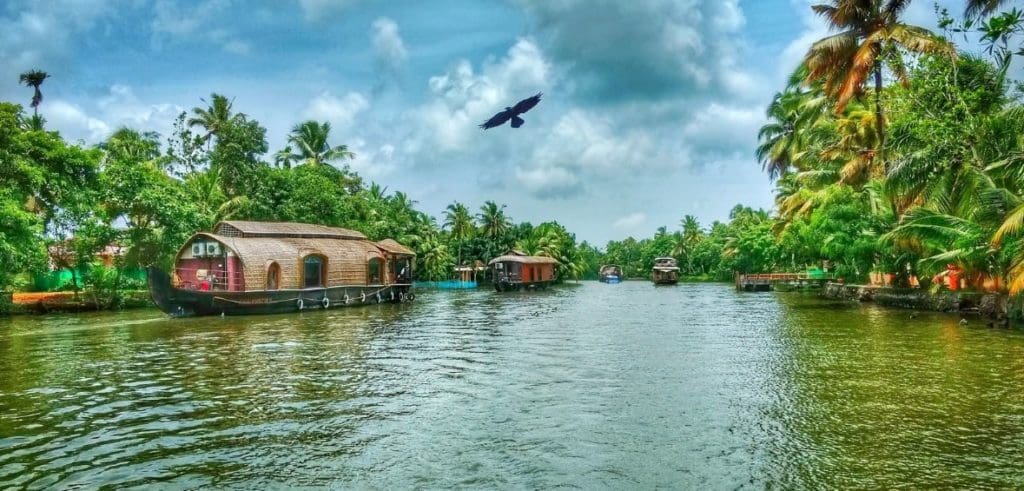
Houseboats are huge, slow-moving, exotic, long flat-bottomed boats that are constructed for leisure trips. They are the latest versions of traditional Kettuvallams. A houseboat is made up of hundreds of heavy planks of jack-wood that are held together by coir knots. Their outer body is coated with caustic black resin and that lasts for a longer period without getting dilapidated. Local carpenters have used ancient principles and techniques for the construction of the houseboat. There are of an average 70ft long and 15ft width. A ride in a houseboat is an adventurous leisurely trip where one can experience and considered to be the most magical moment in one’s life.
5. Watch a Pooram Temple Festival in Thrissur
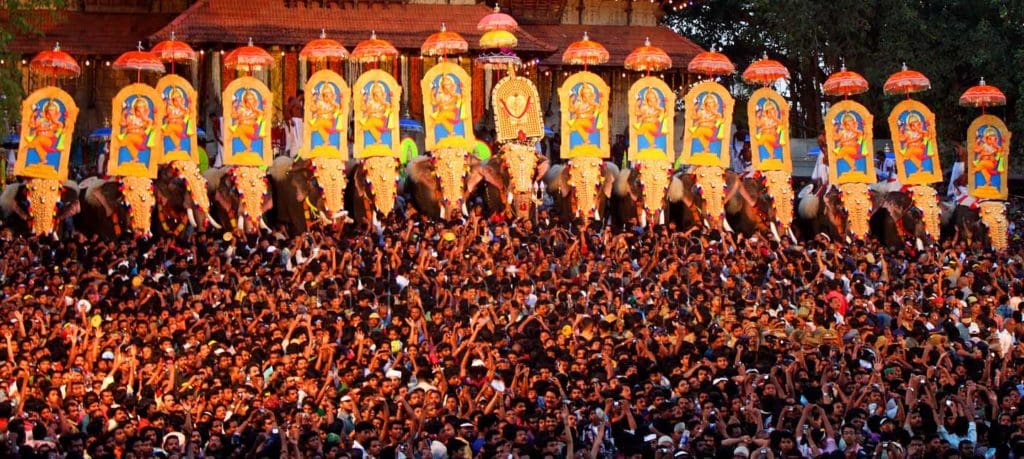
In Pooram there is an uncountable number of elephants participating from various neighboring temples which are held at the famous “Vadakkunnathan Temple”. It is the most colorful festival where a large number of people meet to celebrate this occasion with great pleasure and happiness. It is an annually celebrated festival with the glorious exhibition of fireworks dedicated to goddesses Durga or Kali, taking place during April or May. The elephants present for the Pooram are displayed artistically were one constantly keep admiring them and finds it difficult to take their eyes off. The fireworks start from the evening of the Pooram day and continue until the wee hours of the next morning. Chendamelam and the inevitable Panchavadyam are also the eminent musical performance that is conducted in Thrissur Pooram throughout. Thrissur Pooram Pandal has entered in the 2010 edition of the Limca book of world records too.

